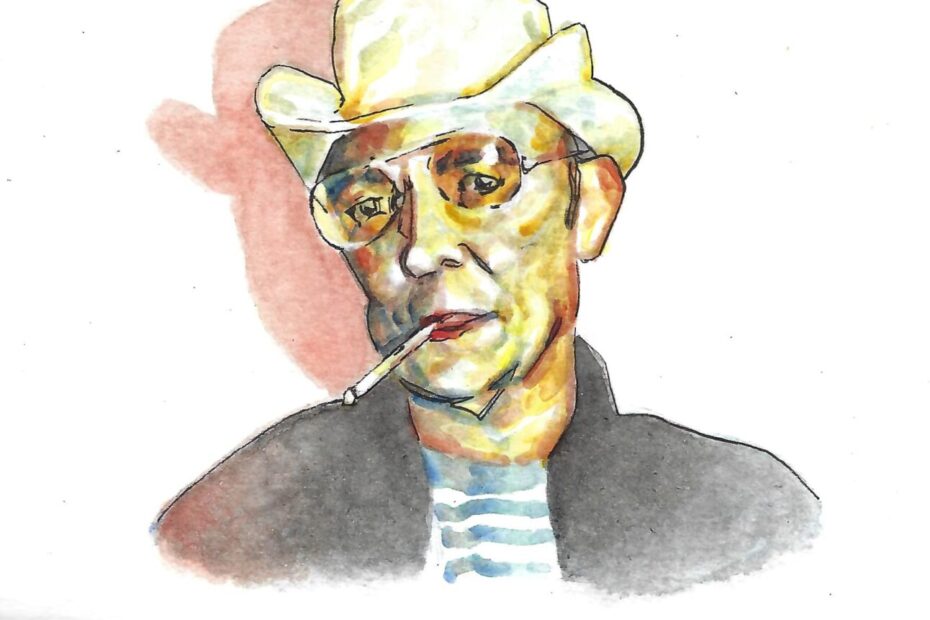Hunter S. Thompson once called his sensational 1971 novel Fear and Loathing in Las Vegas, a “failed experiment.” If creating a new form of journalism — one that continues to influence writers 50 years later — is a failure, it’s hard to imagine what he would consider a success. In fact, I would argue that Thompson’s unique style of “gonzo” journalism is even more deeply relevant today than it was during its development in the 1970s.
Gonzo journalism can be defined as a style of journalism in which the reporter inserts themselves directly into the story they are reporting on, in order to relate events as they experienced them. It contrasts mainstream journalism whereby the reporter strives to remain as neutral and detached as possible.
Even if journalism can rarely achieve true objectivity in the strictest sense, this does not stop news outlets from professing to report the “Truth” with a capital “T.” Against this backdrop, gonzo journalism is unique in that it recognizes and leans into – rather than tries to escape – its inherent subjectivity. It is transparent in its intentions: to relay the particular experience of the reporter in a specific time and place, explicitly filtered through that person’s perception. In doing so, gonzo journalism steers clear of some of the pitfalls encountered by traditional, “objective” journalism.
The manner in which gonzo journalism came to exist says a lot about the key tenets of the style. Thompson began developing what would become his defining MO in 1965, while working on an article covering the inside world of the motorcycle gang the Hell’s Angels. In order to write the piece, Thompson infiltrated and lived with the biker gang for nearly a year. Reflecting on this time, he said: “I was no longer sure whether I was doing research on the Hell’s Angels or being slowly absorbed by them.” This would set an important precedent for the style: the writer of gonzo journalism is typically an integral part of the action being reported on. While the origin of the term “gonzo” is contested, an editor for the Boston Globe was supposedly the first to use the phrase in relation to Thompson, claiming that it was “South Boston Irish slang describing the last man standing after an all-night drinking marathon.”
Thompson’s most famous piece of gonzo journalism is his generation-defining novel Fear and Loathing in Las Vegas. Upon publication in 1971, the book immediately became a journalistic sensation and catapulted Thompson to notoriety. Fast-paced, shocking, and at times viscerally disgusting (but always maddeningly well-written), Fear and Loathing is unlike anything I’ve read before. Thompson provides a hedonistic snapshot of 70s America smack in the middle of the “drug era”. In Thompson’s words, it became “a savage journey into the heart of the American Dream.”
From the first page, Thompson’s frantic prose grabs you by the neck and doesn’t let go for a second. One might characterize the experience of reading Fear and Loathing as the literary equivalent of an acid trip – a fitting metaphor given how central drug use is to the narrative. Thompson quickly abandons any pretense of covering the story he’s actually been sent to report on, and instead documents the protagonist and his attorney’s drug-fueled hijinks, which frequently put them dangerously at odds with the law. In the second half of the book, the pair is sent to cover the national drug law enforcement convention where things go even further off the rails.
Fear and Loathing’s use of gonzo journalism is both hilarious and deeply critical. With a self-effacing, irreverent tone, the protagonist offers a biting satire of the deeply flawed society he finds himself in. We get the feeling that the morally reprehensible protagonist is himself part of this satire; he is, in his drug-addled, chaotic, messy way, the ultimate product of this society. It is hard to imagine a more scathing and honest critique of 1970s drug culture in America, than one provided by a mescaline-riddled, broke journalist who has somehow infiltrated a drug enforcement conference.
You might be asking yourself: what use do we have for gonzo journalism in 2024? In resolutely resisting the pervasive journalistic urge to take oneself seriously, gonzo journalism is able to provide insightful, personal coverage on extremely serious topics. Although reporting in general still holds up objectivity as the gold standard, there is a growing tension over how to define objectivity that is becoming hard to ignore. In our media-saturated modern world, it is hard if not impossible to find reporting not coloured by political ideology, the need for views, or the propagation of a certain agenda. In addition, as we increasingly recognize the impact of experience and situatedness, among other contextual influences, a key reality becomes clear: there may be no such thing as objective journalism. In the words of Thompson: “Absolute truth is a very rare and dangerous commodity in the context of professional journalism.”
So what does gonzo journalism look like today? While specific publications devoted entirely to gonzo journalism have now emerged, such as Gonzo Today, I would argue that elements of the style have increasingly leaked into mainstream reporting. A lot of online-only journalism or quasi-journalism, such as the content found on sites like Medium, is moving away from a traditional journalistic expectation of objectivity – more and more we see stories of regular people, telling it like they saw it. Over 50 years after Fear and Loathing in Las Vegas took the journalism world by storm, gonzo journalism is alive and well.

